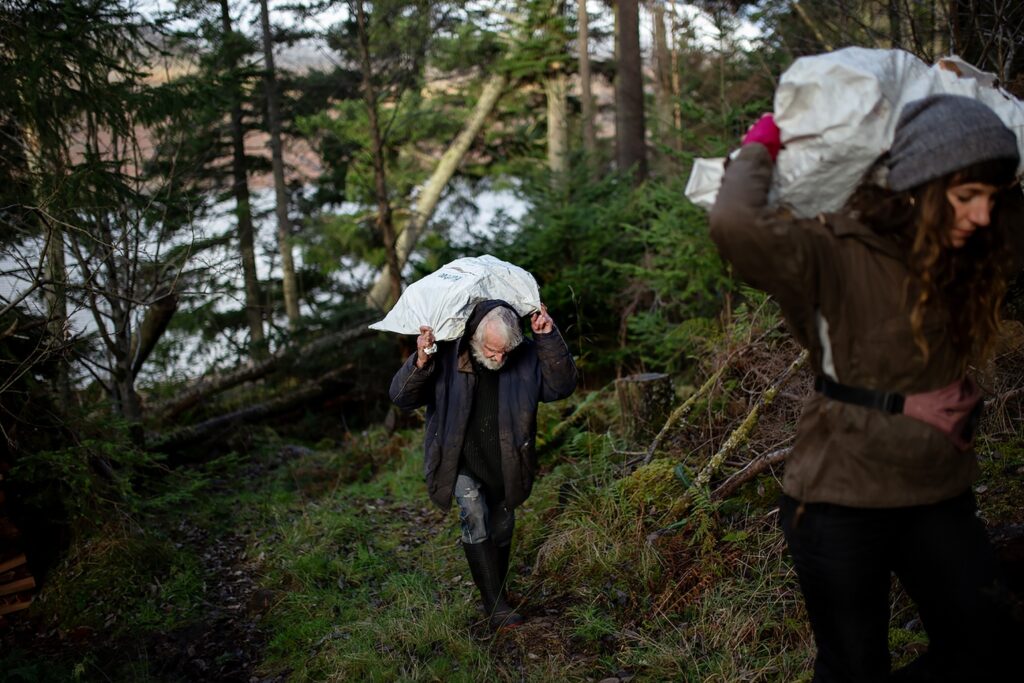A Documentary, ‘The Hermit of Treig’ Tells the Story of a Man Who’s Lived Off the Grid for Decades
The environmentally minded will take a shine to the subject’s fortitude and his back-to-the-land sense of wonder, but few of them are likely to take up a life in which convenience is in such short supply.

Filmmaker Lizzie MacKenzie adores Ken Smith for a number of reasons, and one of them surely is his patrician profile. Mr. Smith is the title subject of Ms. MacKenzie’s new documentary, “The Hermit of Treig,” and, notwithstanding Mr. Smith’s scruffiness, he cuts a striking figure. The director repeatedly sets off her subject’s high cheekbones, sharply crooked nose, and weighted brow against the farther reaches of the Scottish Highlands. Tidy Mr. Smith up a bit and he might pass for a Roman orator of yore.
The environmentally minded will take a shine to Mr. Smith’s fortitude and his back-to-the-land sense of wonder, but few of them are likely to take up a life in which convenience is in short supply, basic niceties are hard-won, and technology is, for the most part, absent. Now in his late-70s, Mr. Smith has been off the grid for more than four decades and continues to bear the brunt, as well as garner the satisfactions, of back-breaking work. Necessity, in this particular case, is a balm on the soul.
The tenderness Mr. Smith bestows upon his daily ministrations — it is in the nature of things to address and touch the wildflowers growing nearby — is matched by the solicitude of Ms. MacKenzie’s camera and screen presence. She initially heard of the “old man that lived at the edge of the estate” while waiting tables in the Highlands.
Curiosity got the better of her: Ms. McKenzie sought out Mr. Smith and spent 10 years filming in and around his cabin along the shores of Loch Treig, a freshwater lake about 12 miles outside of the nearest city, Fort William. The closest road is a two-hour walk away.

Mr. Smith’s early years are glanced upon. He was born at Derbyshire, England, and began working at the age of 15 in construction and later farming. A diligent keeper of daily journals, Mr. Smith has a record of his first wage — three pounds and 15 shillings — as well as a notable gap of entries between October 1973 through July of the next year. Mr. Smith suffered a brain hemorrhage after being set upon by eight assailants after exiting a discotheque at 2 a.m.
The prognosis by hospital doctors wasn’t good: Mr. Smith would never speak, walk, or write again. “But I did,” he avers with enviable lassitude, “and that’s when I decided to never live on anyone’s terms but my own.” He traveled to the Yukon and, whether it was a whim or on a dare, decided to veer away from roads or pathways to begin an adventure that eventually encompassed 22,000 miles.
Upon returning to the United Kingdom, Mr. Smith discovered that his parents had since died. Stunned, he began again to walk — this time throughout the length of Britain and up into the wilds of Scotland. The immensity of his loss ultimately hit Mr. Smith and he began to grieve only upon arriving in Rannoch, an area whose nearest township has a population numbering about 250. It seemed a place to call home.
There are holes in Ms. MacKenzie’s telling of this tale — one can’t help but want additional information about Mr. Smith’s family and his assault — but, then, the memory of her subject isn’t all it used to be. The chief point of drama in “The Hermit of Treig” is when Mr. Smith suffers a stroke and is taken to the nearest hospital. His lone nod to modernity — a personal GPS location device — likely saved his life.
Otherwise, Mr. Smith wobbles on in the firm belief that “civilization … [is] blooming boring.” A tight 80 minutes spent in his company is enough time to give a city-dweller pause.

